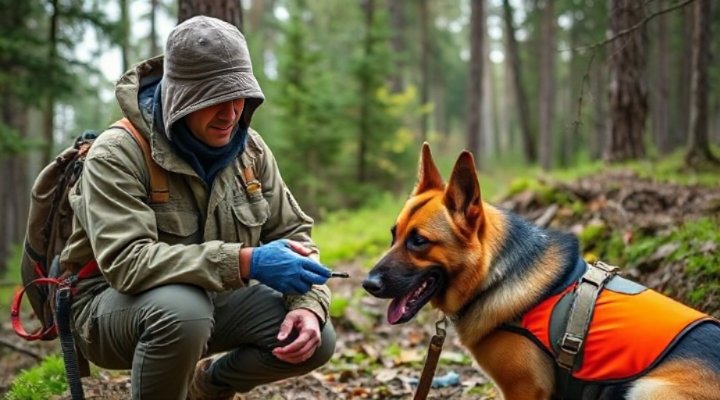Search and rescue dog training is one of the most rewarding yet challenging types of canine training. These remarkable animals save lives in disaster situations, wilderness searches, and urban emergencies. If you’ve ever wondered how to transform your dog into a professional rescue partner, this guide will walk you through every step of the process.
Choosing the Right Dog for Search and Rescue
Not every dog is cut out for search and rescue work. The ideal candidates typically include breeds like German Shepherds, Labrador Retrievers, Border Collies, and Belgian Malinois. These breeds combine intelligence, stamina, and a strong work ethic – essential qualities for SAR dogs.

When selecting a potential SAR dog, look for these key traits:
- High energy levels and endurance
- Strong prey drive and curiosity
- Excellent nose work abilities
- Good temperament with people and other animals
- Fearlessness in new environments
Basic Obedience: The Foundation of SAR Training
Before any specialized search training begins, your dog must master basic obedience. According to basic dog commands, your SAR candidate should flawlessly respond to:
- Sit, stay, and down commands
- Recall (come when called)
- Heel position walking
- Leave it/drop it commands

These foundational skills ensure your dog remains under control in high-stress situations. I remember training my first SAR dog, Max – a brilliant German Shepherd who could find anything but initially had trouble with the ‘stay’ command. Through consistent positive reinforcement (plenty of treats and praise), we overcame this hurdle.
Specialized Search and Rescue Training
Scent Discrimination Training
The core of search and rescue dog training revolves around scent work. Dogs can detect human scent even when buried under rubble or snow. Start with simple hide-and-seek games, gradually increasing difficulty.
Area Search Techniques
Teach your dog to systematically search large areas using grid patterns. This is crucial for wilderness searches where victims might be unconscious or unable to call for help.

Disaster Search Training
This involves training dogs to navigate unstable surfaces and indicate finds without disturbing the scene. The Federal Emergency Management Agency (FEMA) provides excellent resources on disaster search protocols.
Water Search Training
Some SAR dogs specialize in water recovery. This requires additional training to work from boats and indicate scent sources in water.

Advanced SAR Skills
Once your dog masters the basics, you can introduce more advanced skills:
- Bark indication (alerting by barking at the find)
- Refind (returning to handler after finding victim)
- Multiple victim discrimination
- Night search operations
According to the National Association for Search and Rescue (NASAR), certified SAR dogs must demonstrate proficiency in these advanced techniques.
Certification and Continued Training
Professional search and rescue dogs typically require certification through organizations like NASAR or FEMA. Certification involves rigorous testing in various scenarios. Even after certification, SAR dogs need regular training to maintain their skills – at least 8-10 hours per week.

Remember, search and rescue dog training is a journey that requires patience, dedication, and a strong bond between handler and dog. Whether you’re training for professional deployment or just want to challenge your canine companion, the skills you develop together can make a real difference in emergency situations.
For more specialized training advice, check out our guide on working with challenging dogs or our article on certification processes.
Related Keywords: SAR dog training, rescue dog certification, canine search techniques, disaster response dogs, professional dog training, scent detection training, wilderness search dogs
